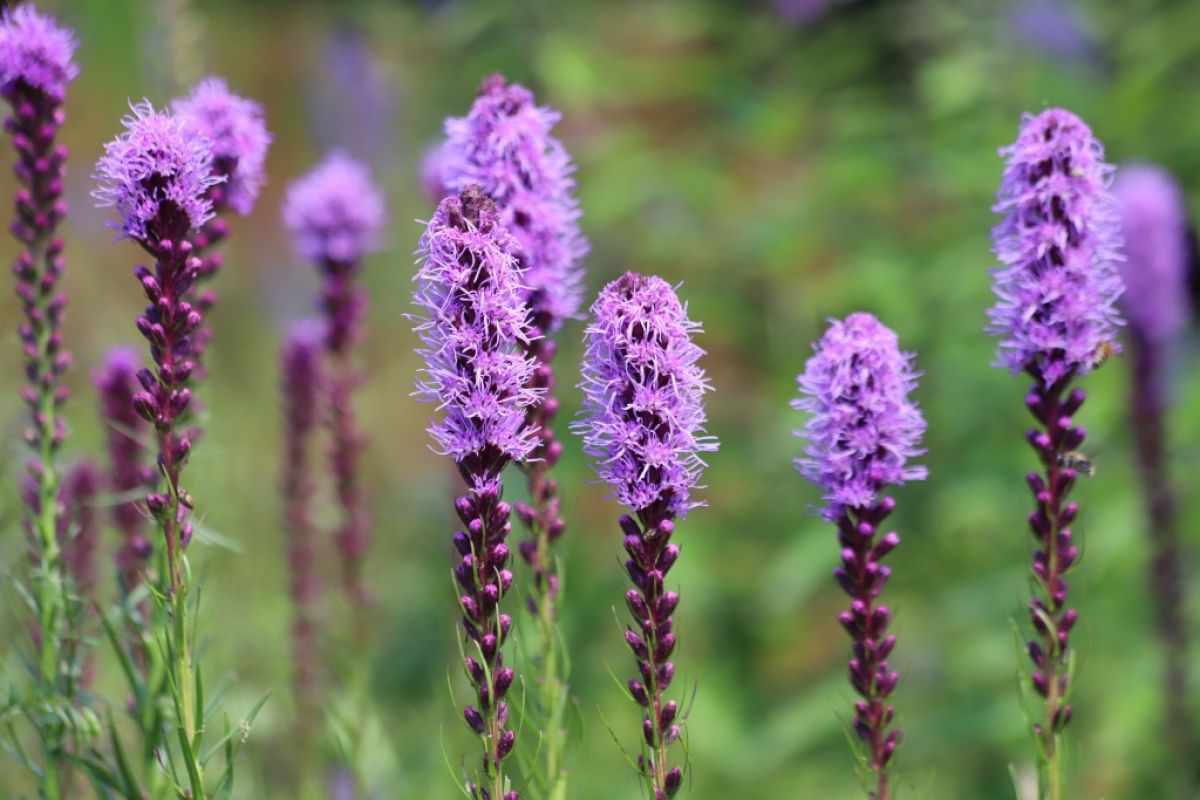Liatris, which has wand-like flowers, has the botanical name of Liatris compositae and is actually part of the daisy family. However, there are no petals on their stiff flower spikes.
There are few flowers like liatris in the flower world, as the blooms open on top of the stalks first, and the ones on the bottom open last. The entire liatris genus is found only in North America, and most of the 40 species are found east of the Rocky Mountains. Liatris spicata with the common name of gayfeather is the most familiar species in the Midwest.
In olden times, the corms of many species of liatris were made into a poultice to treat snakebite. A tea made using the roots of liatris plants was also used to treat kidney ailments as well as sore throats and colic.
The tall upright flower wands, mostly in lavender colors, look striking in a garden when interspersed with flowers that are rounded. They also team well with rocks in naturalistic plantings. They don't enjoy humidity, which is why they do not persist for long in our midwestern flower beds. Common names include button snakeroot and blazing star.
They bloom best in alpine gardens from July into late autumn.
This is Moya Andrews, and today we focused on our native liatris.










